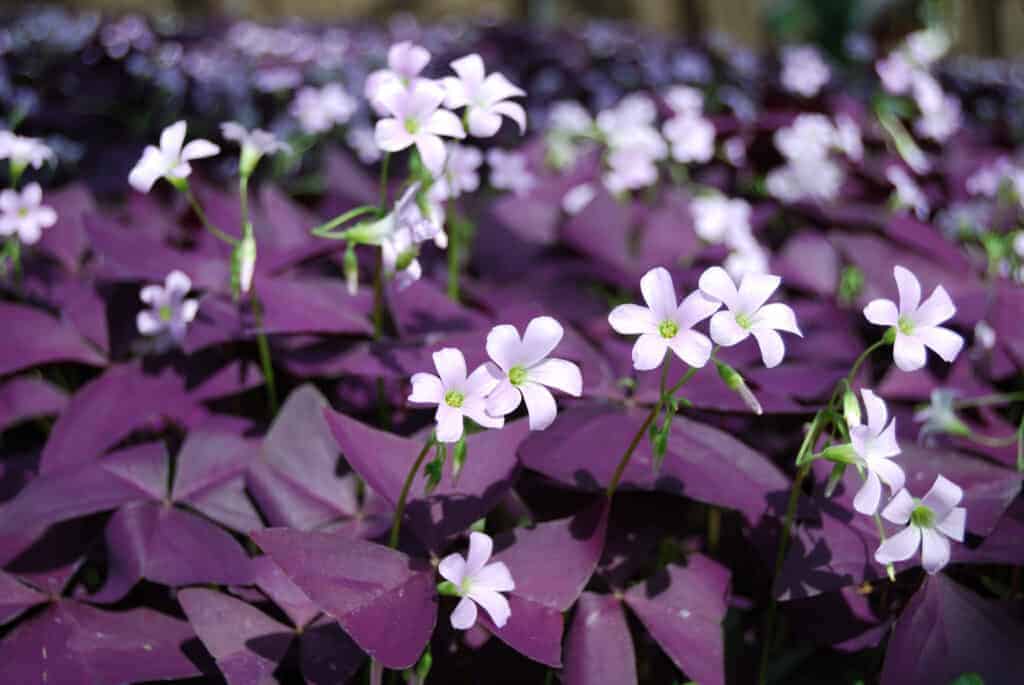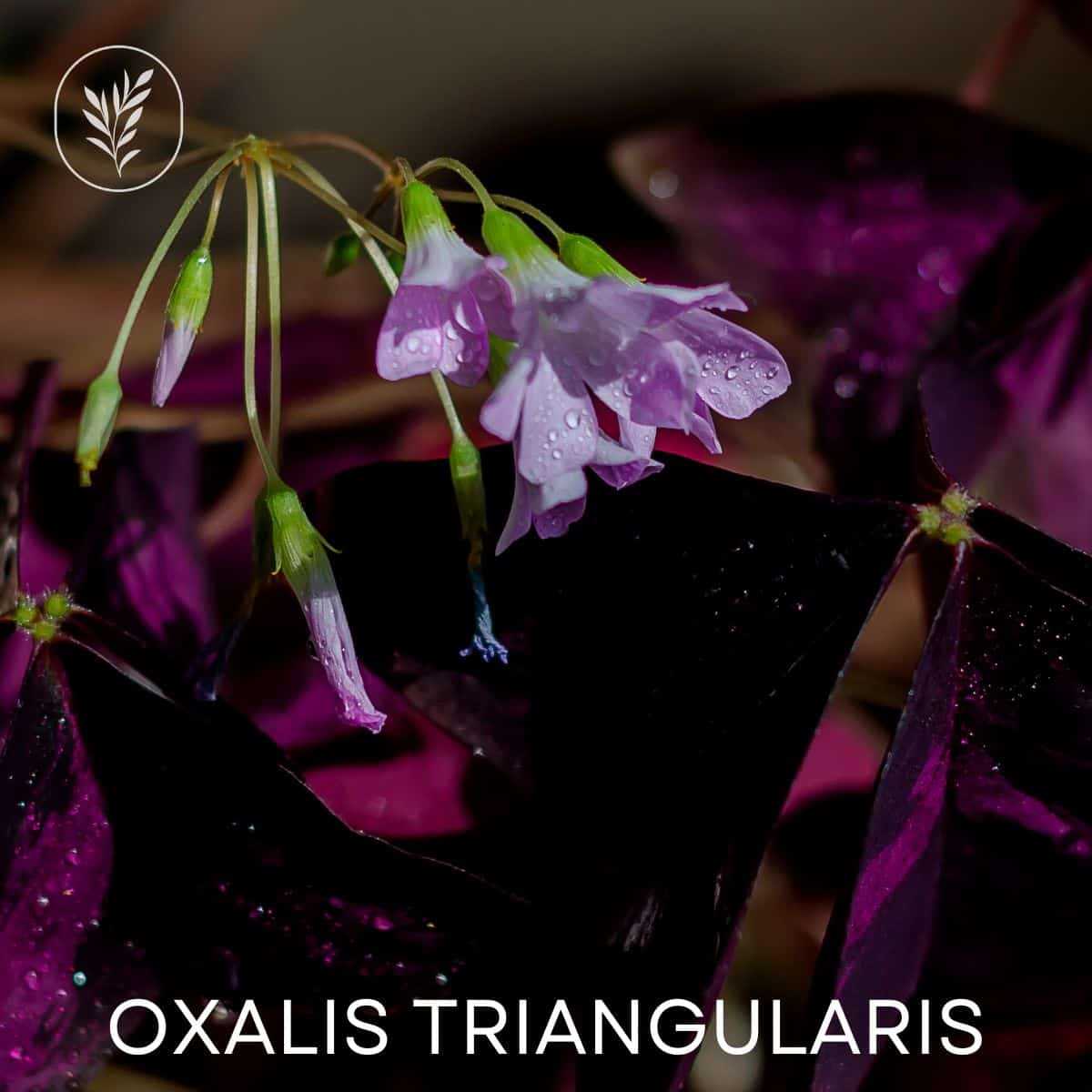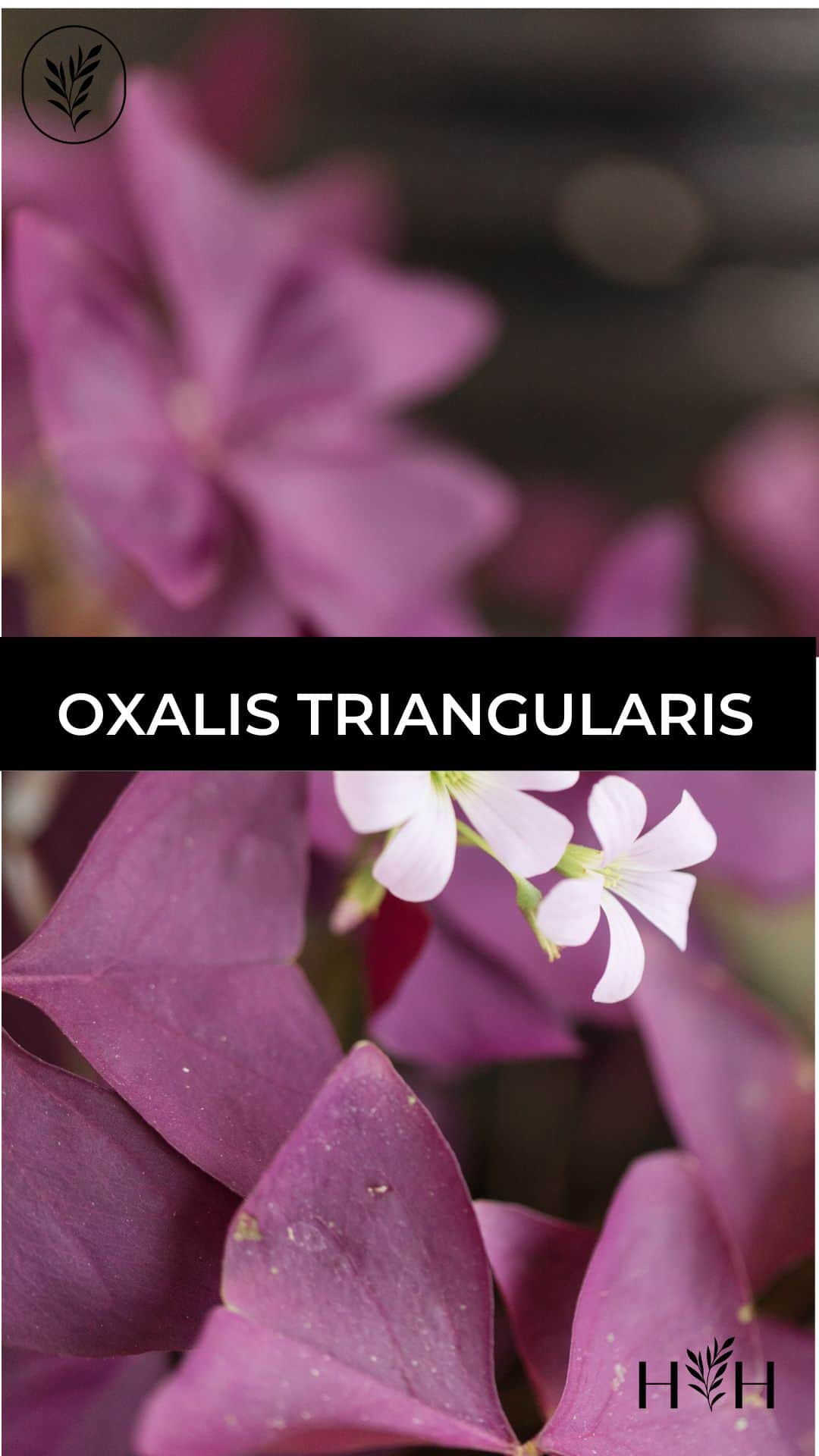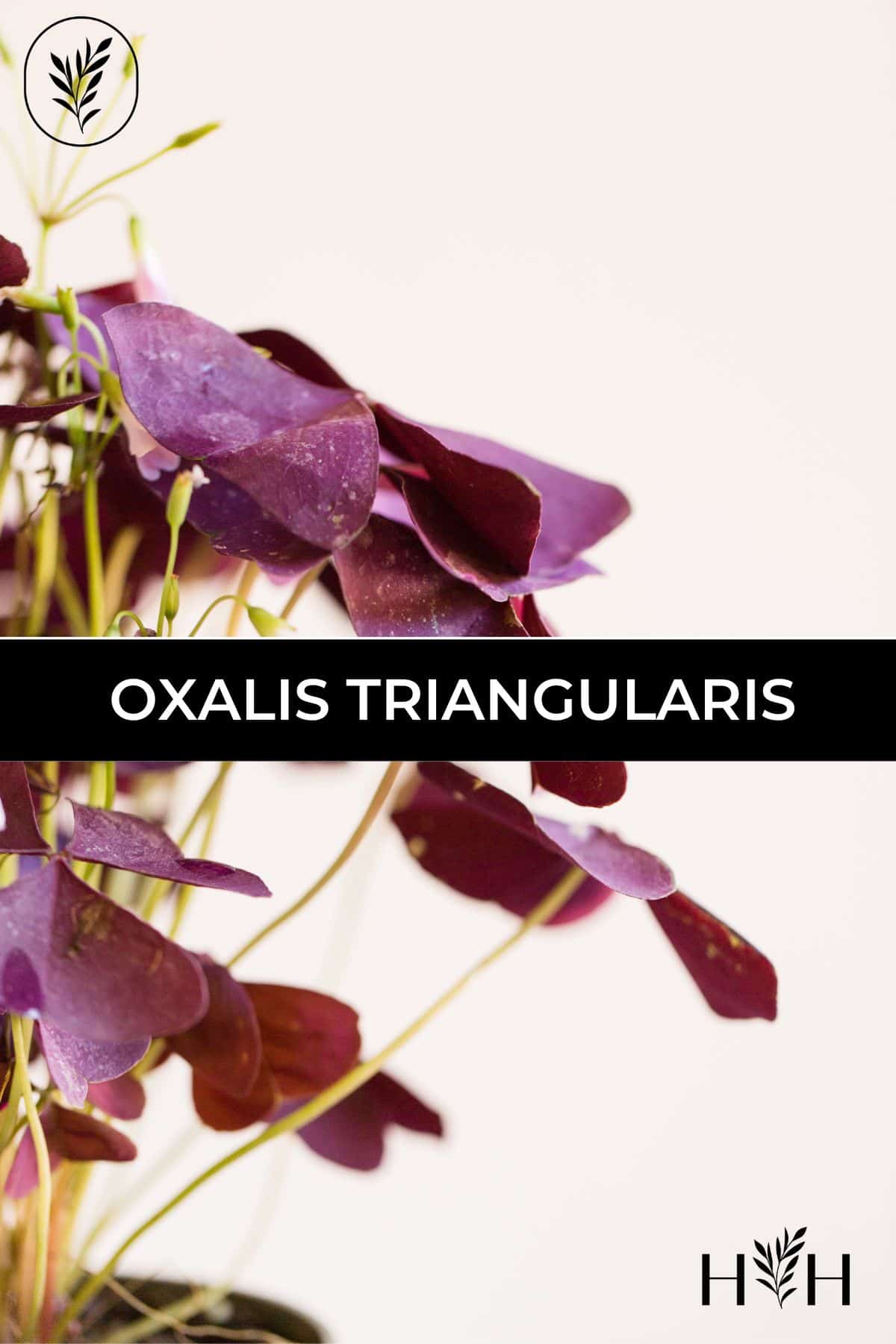Wondering what that gorgeous dark-purple shamrock-shaped ornamental plant is called? Its Oxalis triangularis!
Oxalis triangularis, known as the Purple Shamrock Plant, is an ornamental known for its stunning purple shamrock-shaped leaves and dainty white flowers. Oxalis triangularis originates from Brazil and is now frequently grown as a container ornamental and as a houseplant.
Read on to learn all about the beautiful Oxalis triangularis plant!
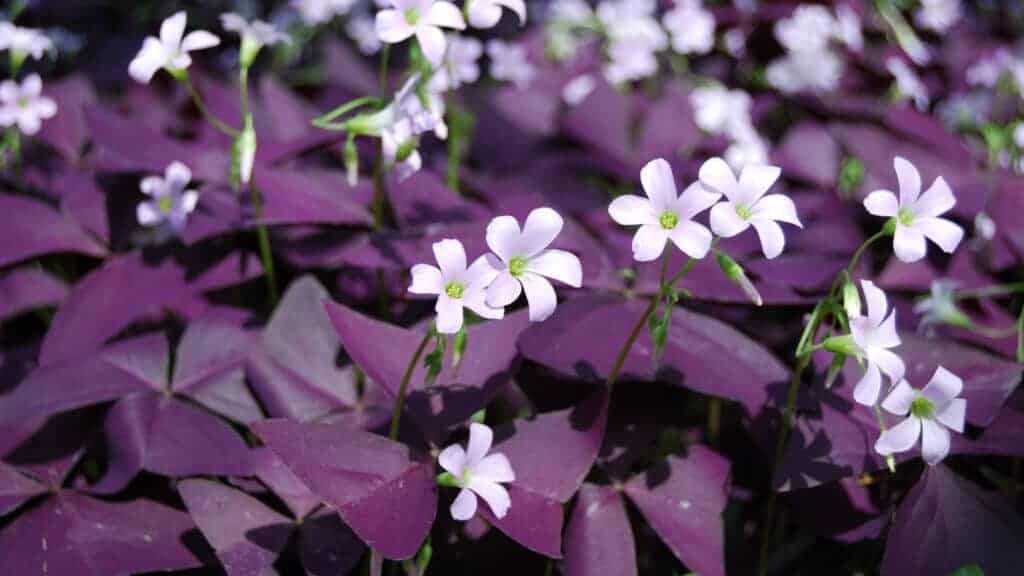
Oxalis Triangularis: Purple shamrock plant
Oxalis triangularis is commonly known as the Purple Shamrock Plant due to the triangular three-leaved foliage. They are often commercially labeled as actual shamrocks, especially before St. Patrick’s day, when they are commonly bought or given as gifts. However, these plants come from South America (specifically Brazil), not Ireland!
Oxalis triangularis is a very beautiful plant, with small, trumpet-shaped flowers that come in white, light pink, and lavender colors. The flowers bloom in the spring and summer and last a good few weeks. Each stem will have three triangular leaves, which look like three butterflies sitting nose-to-nose. Most similar plants of the species will have green foliage of the same shape, but the Oxalis triangularis is special due to its unique, eye-catching purple leaves.
These plants are also known to be very low-maintenance houseplants. They have a near-miraculous ability to “come back from the dead.” Because they rely on a fleshy root system, they can go dormant when conditions are too harsh, dying back to their roots only to regrow when conditions are right.

Oxalis Triangularis plant care
Oxalis triangularis plants are easy to care for, and can live for a long time—up to 100 years! This means they often become “heirloom plants”, passed down from generation to generation, in most cases becoming part of a much-loved family tradition.
Keep this plant somewhere it can get a lot of indirect sunlight. While direct sunlight can be too harsh for this plant in hot climates, the leaves do require medium light levels to produce energy. If the lighting conditions aren’t bright enough, your plant won’t grow as robustly, and it will tend to become unkempt and leggy, with uneven growth and flopping stems.
Water your plant about once every week, and water it very lightly/gently. The stems of this plant are delicate and can easily break if treated roughly. Only water when the top inch or so of the soil is dry. Too much water can cause root rot, and too little water can cause the plant to go dormant, which we’ll discuss later.
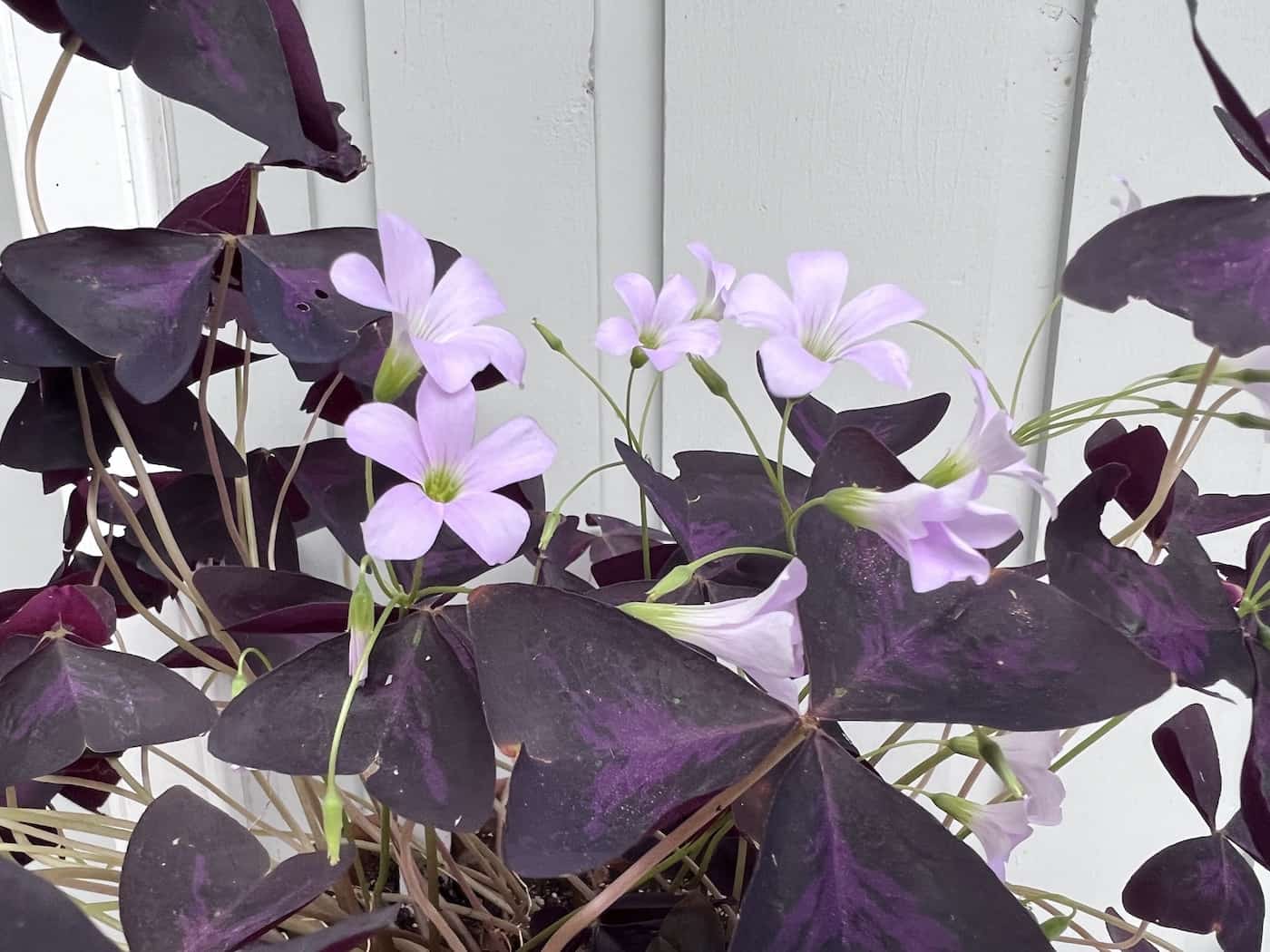
Oxalis Triangularis are highly “photophilic”, which means their flowers and leaves react to the amount of sunlight they are given. In bright light, they open wide. In little or no light, the closed flowers and leaves look like butterflies.
These plants, along with most of the Oxalis family, exhibit nyctinasty. This means the plant moves in response to darkness; the increase and decrease in their build-up of sugars and potassium cause the leaves to lift and droop, almost as if the plant was dancing.
The Oxalis triangularis plant grows an average of 20 inches tall when flowering, and the leaves will stretch out quite a bit. Because of the wide growth, this plant is normally kept outside. However, it keeps very well when restricted to a pot, making it an ideal houseplant.
When fertilizing your plant, use a balanced organic houseplant fertilizer at the strength and frequency listed on the packaging.
These plants enjoy normal household temperatures, somewhere between 60 and 75 degrees Fahrenheit. Anything more than 80 degrees can cause dormancy. If temperatures become too hot, the plant will wilt. Be sure not to place your plant near a vent, as the fluctuation between air conditioning in the summer and heating in the winter can cause your plant to go into shock, go dormant, or die completely.
When the flowers die, prune them off to keep them from causing other problems, such as rot or disease. During the plant’s dormant period, trim away and remove dead foliage.
Repot your Oxalis triangularis plant about every other year, and always use a pot one size up from the current size (until the desired maximum sized is reached). Make sure your pots have good drainage as well. To do this, use a potting mix that holds moisture, but drains well. Any average indoor plant mix is fine, but you can always add some perlite or peat to add more moisture. For best results, use a lightweight potting mix.
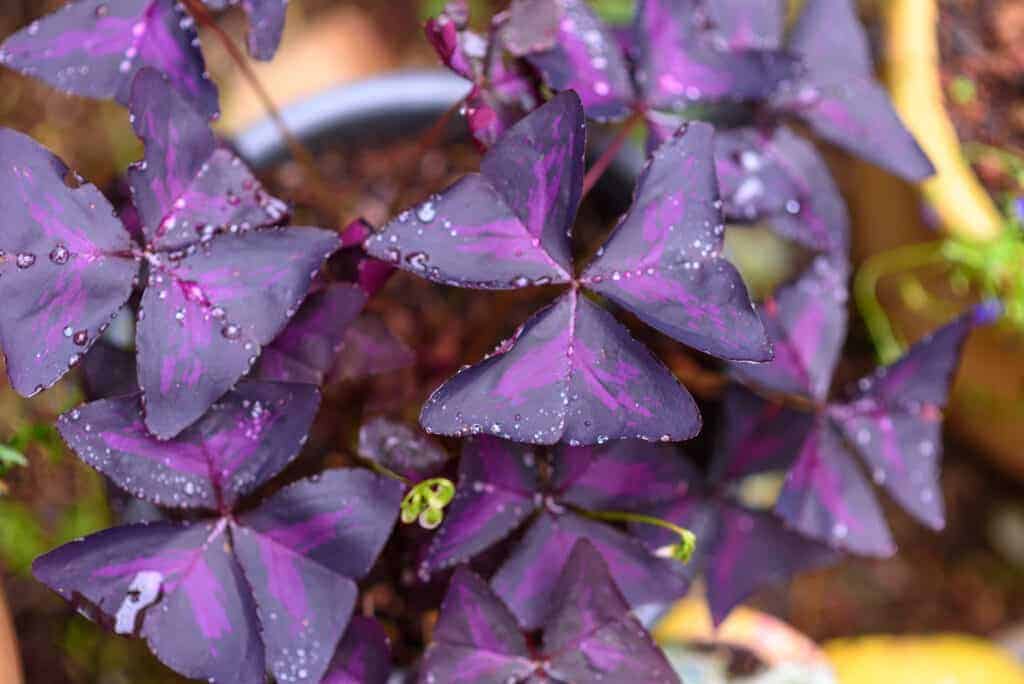
Dormancy of Oxalis Triangularis plants
The Oxalis triangularis can occasionally go dormant, typically after the growing season and when the plant is experiencing temperature extremes. During this time, the plant may look like it has died. Foliage will droop and the flowers won’t open to the light. Allow this to happen; it doesn’t always mean that your plant has died!
A dormant Oxalis triangularis requires a different care routine than a non-dormant plant. Once your plant has gone dormant, remove dead foliage. Dead and damaged flowers and leaves cause stress to the plant and take up energy that could be directed elsewhere. By removing these stressors, air can flow better through the plant and encourages better energy distribution, which results in a healthier, stronger plant.
Do not water or fertilize a dormant plant. This will soak the soil, and cause root rot. Instead, move the pot to a dark, cooler area for about a month, and let the soil dry completely. When new leaves begin to grow, return the plant to indirect light and resume your regular care schedule. Water lightly, gradually increasing back to normal water intake.
Repot bulbs while the plant is dormant, but try to do it toward the end of its dormancy. The plant needs time to rest, and the stress of repotting and replanting isn’t good for a plant freshly out of dormancy. Allow it some time to recover.
Propagating Oxalis Triangularis
The Oxalis triangularis plant has a bulb-like or tuberous root system, which means that if your plant grows thick and full, you can choose to propagate it. This means dividing the plant into different sections, each with its own bulbs, and repotting them. This way, you can multiply one plant into many.
Propagation is much like the repotting process. Just gently remove the plant from the pot and separate it into sections. Try not to cause too much damage to the roots; be sure you’re getting the whole root clump, bulbs, and all. The roots might be tangled together; if this is the case, use clean scissors to cut them apart, trying to keep as much of the root intact as possible.
Repot each piece into appropriately sized pots, water well, and put it back into bright, indirect sunlight. The propagation and replanting process might cause the plant to go into shock, and some foliage might close up. Give the plant some time to adjust, and it should get back to its full health.
Problems when growing Oxalis Triangularis
There are many reasons your Oxalis triangularis plants might suffer, so it’s important to eliminate any possible cause. If you notice your plant begins to droop or struggle, reconsider your care routine. Try to adjust your watering or fertilizing. If your oxalis triangularis plant continues to decline, here are some common problems, their causes, and treatment:
White spots on the leaves of your Oxalis triangularis might be an indicator of fungal disease or powdery mildew. Although too much direct sunlight can result in white spots, this is commonly caused by too much moisture and wet, dark, too-humid conditions with poor air circulation throughout the plant.
Most of the time, this problem isn’t fatal and will go away on its own. However, if the case is persistent or increasingly severe, you can use a fungicide to treat it. Oxalis triangularis plants are naturally toxic, so be sure to read the label on the fungicide to be sure it will react well to your plant, and use caution if you have indoor pets or children.
The most common pest is mealybugs. If you see white spots, look closely to make sure they’re not mealybugs. If the white spots are mealybugs, immediately quarantine all infected plants. Use a garden hose or showerhead to spray down the plant and wash away the bugs. You can also rub away the bugs using a cotton ball soaked in 70% isopropyl alcohol, however, this only works if the alcohol comes in direct contact with the bug. After a few sessions of this rubbing, the bugs should be completely gone, and you can rinse excess alcohol off your plant.
These solutions should get rid of a light infestation. If the infestation is worse, or the other solutions don’t get the job done, here are a few more heavy-duty methods:
Neem oil is a natural pesticide. Follow the instructions on the label for diluting the oil, then spray it all over your plant, making sure to get under the leaves and on the stems. Before you cover your plant, test the oil in one area to be sure the oil is properly diluted. Neem oil deters bugs and prevents bugs from growing. It will take a few days to actually kill the bugs, but is proven to be very effective.
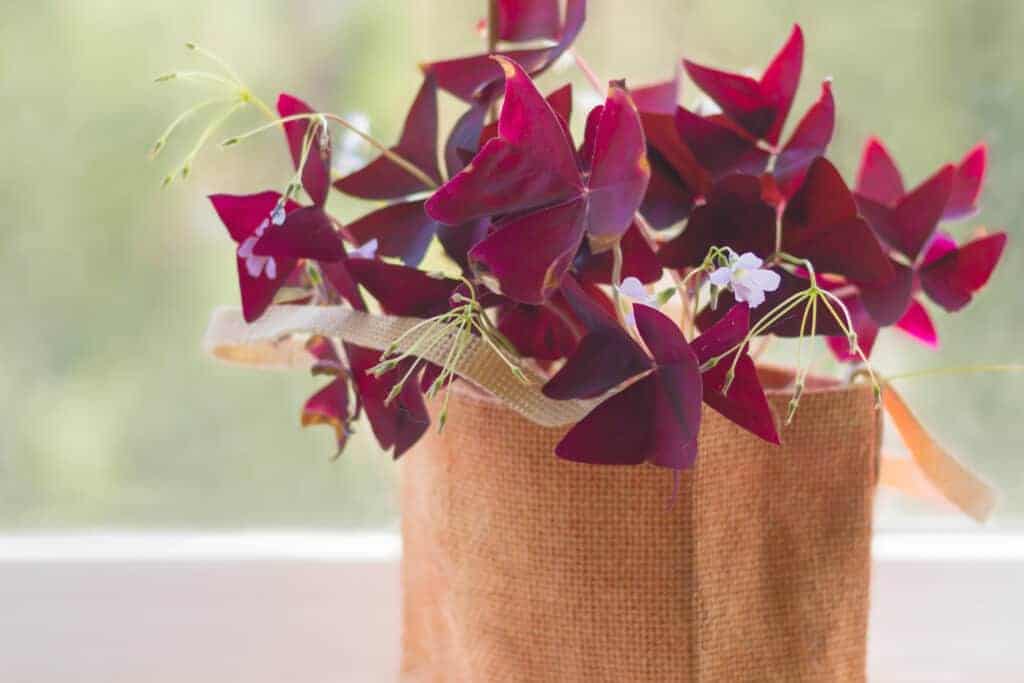
If you’re unable to use neem oil, you can use an organic horticultural spray. Read the directions on the bottle, then test on one area before covering your plant. Horticultural sprays will kill mealybugs on contact.
Other common pests are aphids, spider mites, and whiteflies. There are many in-depth ways to deal with each specific pest, but common houseplant insect controls can usually get rid of them all.
If your plant has dull, yellowing leaves or mushy stems and roots, it is most likely suffering from root rot. Root rot is caused when a plant is overwatered, or when the soil retains too much moisture, exposing the roots to prolonged, waterlogged conditions. This can cause roots to die from lack of oxygen; dead roots can decay and rot away, further spreading the rot. To check for root rot, remove the plant from the pot and feel the roots. Rotten roots will look black and feel mushy. Some may fall off the plant when touched.
Another source of root rot can be fungus in the soil. The fungus may be dormant, and then suddenly come to life if the soil is overwatered even once. Fungus thrives in wet conditions and will kill your plant’s roots, leading to the death of the entire plant.
No matter the cause, root rot can be cured, but only if you act quickly. Remove the plant from the affected soil and wash it under running water. Be gentle, but wash away as much soil and affected roots as possible.
Next, use a clean pair of scissors to trim away the remaining rotten roots. Clean the scissor blades with rubbing alcohol and prune back one-third to one-half of the leaves. This will give the plant a better chance to regrow the roots because it will not need to support as many leaves. If possible, dip the remaining roots in a fungicide solution, then repot the plant in fresh soil and a clean pot—use either a new pot or sterilize the old one with a bleach solution.
Make sure the new soil and pot have good drainage! Only water the plant when the top inch of the soil is dry. Do not fertilize the plant while it regrows its roots, as it may cause unnecessary stress.
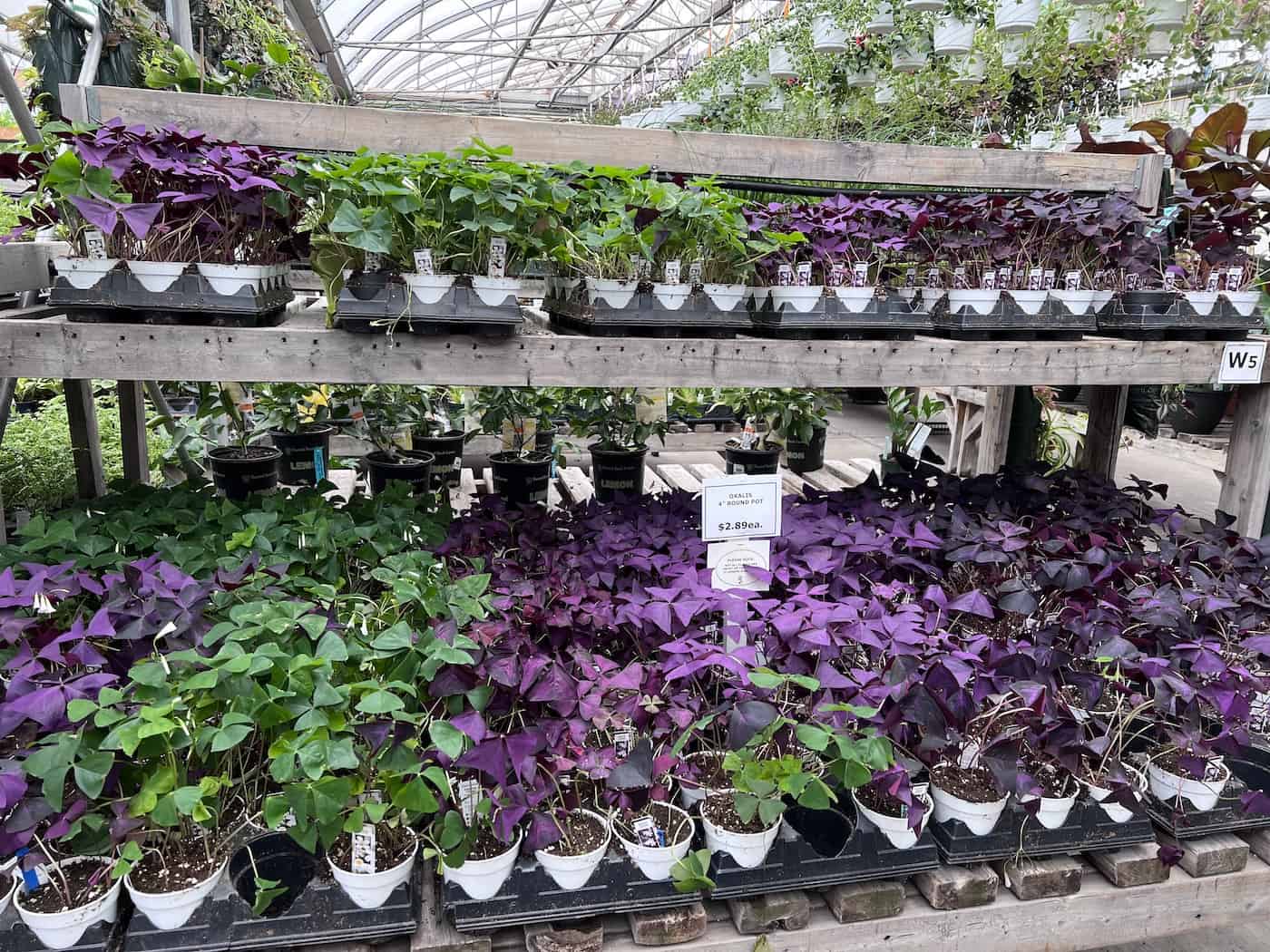
Oxalis Triangularis plant toxicity
Every part of the Oxalis triangularis plant is toxic in large amounts, with the highest toxins being in the bulbs. Keep this plant out of reach of pets and children.


